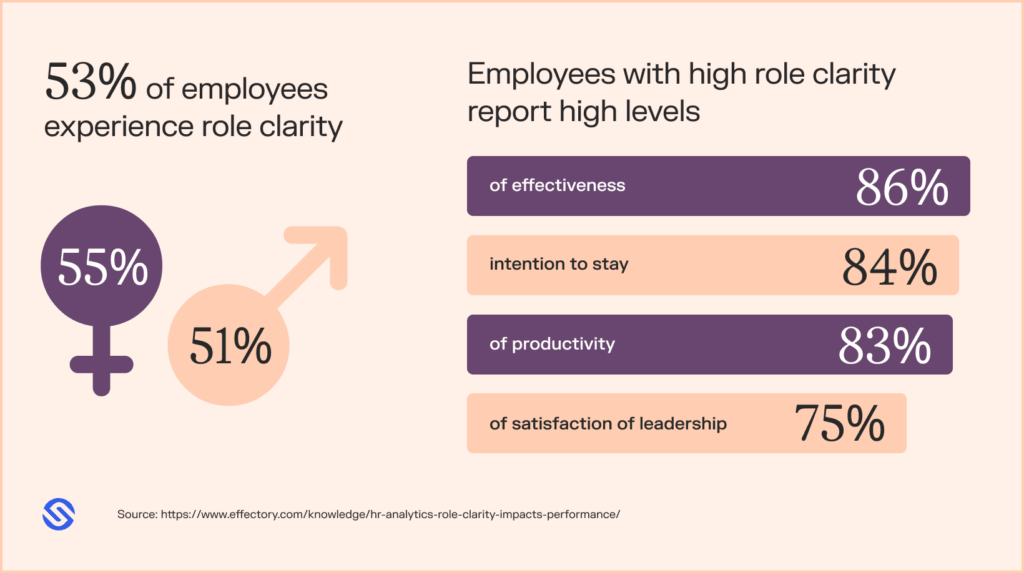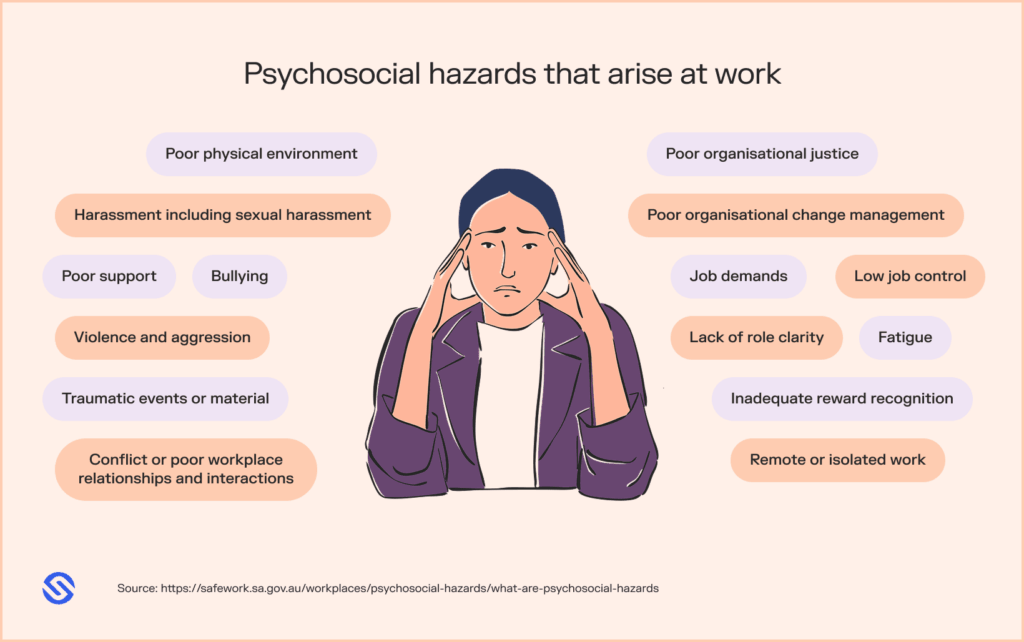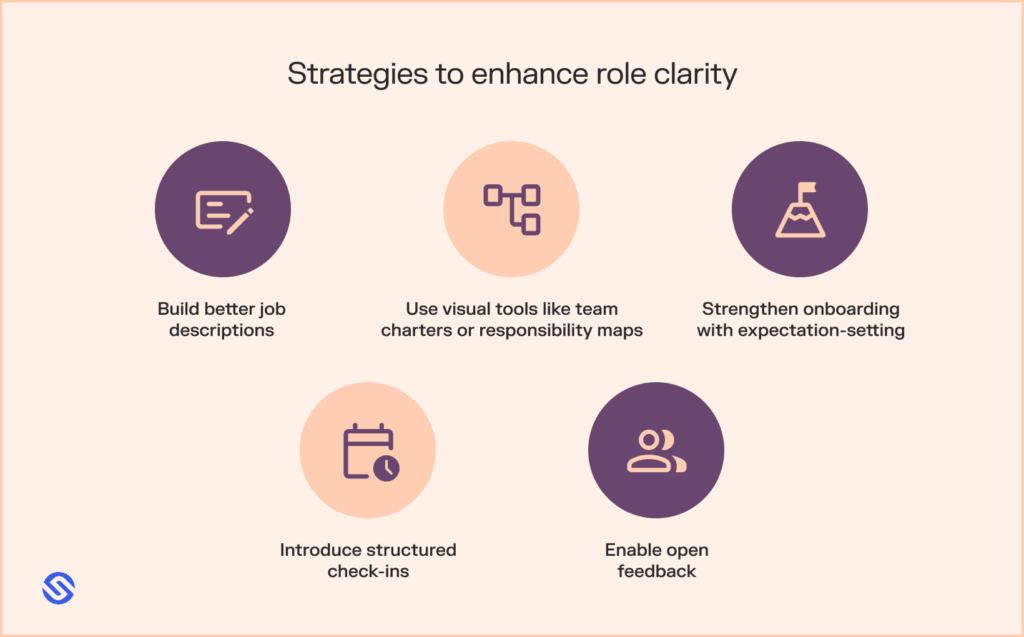Disclaimer: The information contained in this article and on this website is general information only and does not constitute legal advice. Although all efforts have been made to ensure the accuracy and currency of the information presented, Sonder takes no responsibility for any errors or omissions presented. Please contact a legal representative for individual advice.
You’ve hired a great candidate. They’ve onboarded smoothly, joined the team, and are eager to contribute. But within a few weeks, you notice they’re constantly seeking clarification, duplicating work with colleagues, and are unsure whether they’re meeting expectations.
This scenario is more common than most employers would like to admit, and the root cause is usually the same: poor role clarity.
When employees don’t know what they’re responsible for, who they report to, or how their work ladders up to company objectives, performance slows and stress increases. Teams start operating in silos, decisions take longer, and wellbeing starts to decline.
But lack of role clarity is no longer just a productivity issue: it’s a legally recognised psychosocial hazard under Work Health and Safety (WHS) laws. That means it’s an organisational risk that must be proactively identified, addressed and prevented.

Our own research supports the above, for our upcoming Safety Gap Report we surveyed 2,000 Australian and New Zealand workers. 53% reported that they strongly agreed that they felt confident in their role and responsibilities, meaning 47% of the workforce is less clear, with as many as 7% disagreeing completely.
What is role clarity, and why does it matter?
Role clarity is more than employees being given a job title. It means your people have a clear understanding of:
- Their core responsibilities and tasks
- The outcomes they’re expected to deliver
- Who they report to, and who they collaborate with
- Where their responsibilities start, and where they end
- How success is measured, both short- and long-term
When this clarity is present, employees are more engaged, confident, and autonomous. They can make informed decisions, prioritise effectively, and collaborate with less friction. Most importantly, they’re able to focus their energy on high-value work, rather than second-guessing expectations.
Clear roles also reduce unnecessary stress and improve job satisfaction. When employees know what’s expected of them, they’re more likely to stay motivated and committed.
But there’s a regulatory dimension too. Under WHS law, employers have a duty to manage psychosocial hazards and risks to psychological health and safety that arise from poor workplace design or culture. Safe Work Australia explicitly includes “low role clarity” as a common and preventable psychosocial hazard, alongside things like high workload or poor support.
That means improving role clarity isn’t just good for people, it’s a compliance requirement, too.
When can poor role clarity happen?
Role ambiguity doesn’t happen in a vacuum. It’s often a symptom of broader organisational gaps, like unclear communication, poor change management, outdated processes, or too much complexity. Let’s explore the most common scenarios when poor role clarity crops up.
During employee onboarding
- New starters receive limited guidance about what they own versus what’s shared with others.
- Job descriptions are vague, broad or don’t reflect the actual day-to-day responsibilities.
- Managers are too busy to walk through expectations properly, assuming clarity will “come with time.”
- There’s no structured explanation of how the role connects to company goals or how success is defined.
Onboarding can be a crucial moment to build confidence and alignment for new starters. Without clear expectations early on, employees may spend weeks or months operating in the dark.
During organisational change
- Teams are restructured without updated job scopes or responsibilities.
- Leadership doesn’t communicate what the changes mean for each role.
- People absorb tasks from other departments without formal recognition or training.
- After mergers or acquisitions, reporting lines and responsibilities are left undefined.
Change without communication can lead to ambiguity. In transition-heavy work environments, it’s easy for employees to lose track of who does what, or where their role begins and ends.
In the absence of clear communication
- Priorities are constantly shifting without proper updates.
- Employees receive different instructions from different stakeholders.
- There’s no regular check-in rhythm to clarify scope or responsibilities.
- Teams aren’t informed how their work contributes to broader organisational outcomes.
- When clarity relies on guesswork, productivity drops, and trust erodes.
With inadequate role definition
- Job descriptions are outdated or irrelevant.
- Responsibilities overlap between departments, leading to confusion or resentment.
- There’s no clarity around accountability or decision-making authority.
- Employees regularly ask, “Who’s supposed to do this?” or “Is this in my scope?”
Without proper role definition, roles are left to evolve organically, sometimes in ways that don’t serve the individual or the business.
During transitions
- Employees shift into new roles or departments without formal handovers.
- Managers change, but expectations are never realigned.
- People are promoted into leadership roles without a clear understanding of their new responsibilities.
These transitions often come with increased stress, which is magnified if clarity is missing.
In dynamic or high-growth environments
- Teams scale rapidly, and people “wear multiple hats.”
- There’s a “just get it done” mentality that skips over structure.
- Project-based work shifts quickly, but roles remain static.
- Downsizing or resourcing changes stretch roles beyond what’s sustainable.

What are the risks of poor role clarity?
The impact of unclear roles isn’t always visible at first. But over time, the risks compound, affecting everything from wellbeing to retention to your company’s exposure to legal compliance issues.
Stress and mental health strain
Employees who aren’t sure what’s expected of them are constantly guessing. This creates chronic low-grade anxiety that can lead to burnout. People start doubting their competence or feel they’re “failing” without even knowing what success looks like.
Team conflict and poor collaboration
Ambiguity often leads to duplicated effort, task avoidance, or even finger-pointing. When responsibilities are vague, so is accountability, and that creates tension.
Inefficiency and reduced performance
Without clarity, people waste time asking for approvals, chasing details, or working on the wrong priorities. Projects stall, deadlines slip, and feedback becomes inconsistent.
Increased absenteeism and turnover
Role ambiguity is a key driver of disengagement. Talented employees, especially those early in their careers, leave when they feel unsupported or unsure how they fit in.
WHS compliance risk
Prolonged role ambiguity may be seen as a failure to meet WHS duties under the model Code of Practice. If this lack of clarity contributes to psychological harm, it’s no longer just a cultural issue; it’s a legal one.
Poor role clarity is not a small issue. It’s a structural risk, and one that can be entirely preventable.
How to identify signs of role ambiguity
How do you know when role clarity is slipping? These signs often emerge before formal complaints or performance issues:
- Multiple people working on the same task, or no one taking ownership
- Employees regularly ask for task clarification or permission
- Frequent confusion during handovers or project transitions
- Feedback conversations that feel vague, uncomfortable, or off-track
- People are pulling away from collaboration due to the fear of overstepping
- “That’s not my job” is becoming a common phrase
- High levels of rework or missed expectations
- Engagement survey results showing low confidence in leadership or direction
You may also notice increased emotional exhaustion, presenteeism, or conflict between teams that once worked well together. These are all clues pointing to deeper clarity gaps.
One way to start gathering this feedback is to use one-on-ones, pulse surveys, or even anonymous channels. The key is normalising the conversation: “Are you clear on what’s expected right now?”

What are some strategies to enhance role clarity?
Improving clarity doesn’t mean introducing rigid rules or hierarchy. In fact, small adjustments often make the biggest difference. Here’s how to build and maintain clarity at scale:
Build better job descriptions
Don’t treat job descriptions as static HR files; treat them as clarity tools. Make sure they include:
- Key responsibilities
- Metrics for success
- Reporting structure
- Collaboration points
- Decision-making authority
Aim to review them as part of your regular performance rhythm, not just something done during recruitment.
Use visual tools like team charters or responsibility maps
These help people quickly see who owns what, where overlap exists, and how their role fits in across departments. They’re also especially useful for hybrid, remote, or matrixed teams.
Strengthen onboarding with expectation-setting
Make day one about more than system access. Include:
- A walkthrough of how the role aligns with team and company strategy
- First-quarter goals
- Key collaborators and support systems
- Boundaries, and what’s not expected
Introduce structured check-ins
Clarity erodes over time. Use monthly or quarterly check-ins to revisit:
- What’s working
- What’s unclear
- What’s changed
- Where support is needed
Enable open feedback
Create channels where employees feel safe saying, “I’m not sure this is in my scope” or “My responsibilities seem to be shifting, can we review?”
Psychological safety can be helped by honest feedback, and this is where role clarity comes in.
How can you embed role clarity into organisational culture?
For role clarity to stick, it needs to be more than a policy, and it needs to be part of how your company operates and communicates every day.
Here are four practical ways to embed role clarity into your company culture:
- Make clarity a leadership priority: Senior leaders set the tone. When they speak with clarity, model expectation-setting, and revisit goals often, it gives permission for others to do the same.
- Invest in manager capability: Managers are the first point of contact for most employees. Give them tools, coaching, and frameworks to lead clarity conversations with confidence.
- Align clarity with your WHS strategy: Don’t treat psychosocial safety as separate from performance. When roles are unclear, wellbeing is at risk. By embedding role clarity into your WHS framework, you’re meeting legal duties and improving culture simultaneously.
- Keep evolving roles as the business evolves: Encourage regular “role health checks” when projects shift, structures change, or goals evolve. Avoid letting clarity stagnate in a static org chart.
Culture is clarity in motion. When clarity is a habit, not just an initiative, teams trust faster, work smarter, and stay longer.
Step up your workplace wellbeing with Sonder
Role clarity is often invisible, until it isn’t. When expectations are clear, people move with confidence, teams collaborate without friction, feedback becomes actionable, and compliance becomes easier to manage.
But when clarity is missing, the risks are real: disengagement, conflict, psychological harm, and WHS non-compliance. It’s easy to let role clarity slip through the cracks, but workplaces should be somewhere where everyone knows exactly where they stand, what they’re responsible for, and how they can succeed.
At Sonder, we help employers identify and address psychosocial risks like poor role clarity through proactive care, real-time insights, and holistic mental health and wellbeing support.



